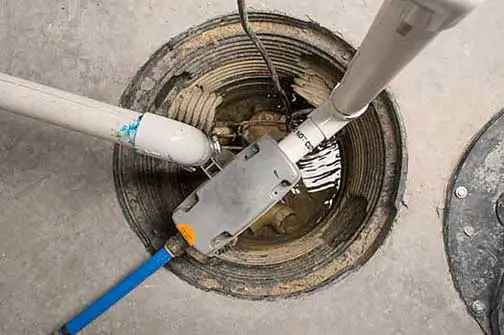
Sump pump malfunctions are among the problems that do not announce themselves before they happen in your home. If your sump pump fails, MHN Management team warns that you can wake up one night to find yourself standing in a pool of dirty water inside your basement.
Considering the high cost of fixing water damage in your basement, what can you do to prevent this problem? This post will discuss the common causes of sump pump failure and how to stay steps ahead of the issues that can expose your home to the risk of basement floods.
Common sump pump problems
Understanding the common issues that cause sump pump failure in your home will help you keep your sump pump in top shape. It is easy to direct your efforts when you know the potential sump pump problems.
Loss of power
Power outages can interrupt the electricity supply to your sump pump. If this happens, your sump pump will not work. It is also possible to forget to plug the sump pump into the outlet after unplugging it for repairs or routine maintenance.
Clogged discharge line
The discharge line carries water that is pumped out of the sump pit to the designated discharge point on your property. If this pipe is clogged, the water in the sump pit will not be removed even if the sump pump is working.
Faulty switch
A faulty float switch can keep your sump pump from powering up or switching off. It can also result in frequent cycling. The most common cause of float switch malfunction is debris or when a sump pump has moved from its position.
Clogged sump pump
If debris is inside the basin, it can block the sump pump inlet. If this happens, the pump cannot remove water from the pit. Debris inside your sump pump can also damage the impeller and cause the motor to burn out.
Faulty check valve
A faulty check valve will allow water that has been pumped out of the basin to cycle back into the pit. That will force the sump pump to work without stopping. A faulty check valve will cause your sump motor to burn out.
How to keep your sump pump in top shape
The following steps can help you prevent or solve the problems highlighted above.
Regular sump pump maintenance
This is the most essential step for keeping your sump pump in top shape. The following monthly maintenance tasks will ensure the smooth function of your sump pump:
Clean the sump pump and basin
Remove any dirt, debris and sediment inside the sump pit. Clean the sump pump to remove any mud and debris sticking to it.
Check the power connections
Be sure that the sump pump is connected to electricity and that there are no faults in the electrical circuits.
Test the float switch
Pour water into the sump pit until the sump pump is activated. Wait to see if it will go off after all the water inside the pit has been removed.
Inspect the check valve
Repeat the previous step, but this time, listen to the check valve to see if there are any strange sounds. Look for signs of backflow when the sump pump powers off.
Install a sump pump cover
A sump pump cover will help you minimize the debris or dirt that finds its way into the sump pit. This small addition will reduce the stresses on your sump pump and make the system less prone to problems. It also makes the job of cleaning the sump pump easier.
Install a backup sump pump
A backup sump pump system keeps your home safe from basement floods even when your primary pump has failed. A backup sump pump connected to power will also fail if your home experiences a power outage. That is why a battery-powered backup system is better.
Review your sump pump system
Sometimes, the issues with the sump pump come from a wrong assessment of your home’s needs and improper installation. If this is the case, you will have frequent sump pump breakdowns. Reviewing your home’s sump pump system can help you identify such existing issues.
Maintain Proper Drainage
To prevent drainage problems that allow rainwater and runoff to enter your basement, do the following:
Grade the landscape
The ground around the home should slope toward the street to keep water from pooling at the base of the building.
Clean gutters and downspouts
Clean and maintain gutters and downspouts to prevent clogs and stop water from overflowing into the foundation.
Extend your downspout
The downspout’s outlet should be at least 10 feet from your building foundation.
Finally, it is a good idea to have your entire sump pump system inspected at least once every year. This inspection should be done by a professional plumber. As part of the inspection routine, the plumber should also thoroughly service your sump pump.

